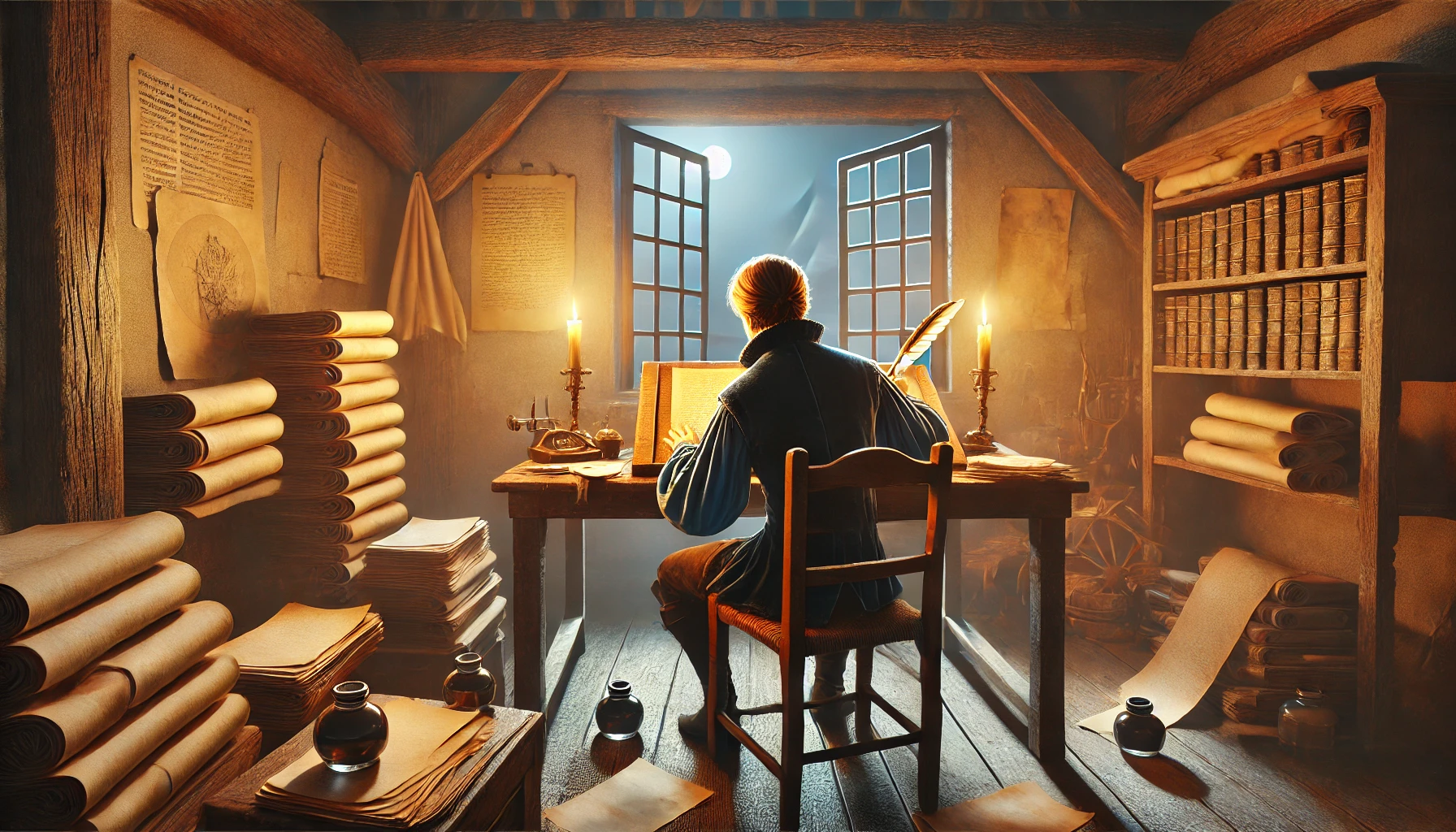When it comes to William Shakespeare, the Bard of Avon, he wasn’t just a writer—he was a genre-bending rock star of the stage. His works have been quoted, adapted, studied, and meme-ified for centuries, proving that good stories never go out of style. But how did Shakespeare’s genius unfold over time? Let’s find out Shakespeare’s works in chronological order to see how he went from small-town scribe to the literary GOAT.
The Early Works (1590–1595): Finding His Footing
Like any artist, Shakespeare had a bit of a warm-up phase, but even his early works show hints of the brilliance to come. This is where he dabbled in history and comedy, creating crowd-pleasers that could pack the Globe Theatre.
- Henry VI (Parts 1, 2, and 3) (1590–1592):
Think of these as Shakespeare’s epic prequel trilogy—lots of battles, betrayals, and a little political shade. These plays lay the groundwork for his historical sagas. - Titus Andronicus (1591–1592):
Shakespeare’s version of a Tarantino film—bloody, brutal, and full of revenge. Not for the faint of heart! - The Comedy of Errors (1594):
A hilarious farce about mistaken identities and twins (so. many. twins). It’s Shakespeare in a slapstick mood. - Love’s Labour’s Lost (1594–1595):
A witty rom-com with a twist: everyone stays single at the end. Shakespeare was already challenging tropes.
The Breakthrough Years (1595–1600): Hits, Hits, and More Hits
By now, Shakespeare was hitting his stride. This period is jam-packed with some of his most famous works—tragic romances, sparkling comedies, and epic histories.
- Romeo and Juliet (1595–1596):
The OG star-crossed lovers. This is the play that made tragic teenage love stories a thing (and gave us the phrase, “Wherefore art thou?”). - A Midsummer Night’s Dream (1595–1596):
Shakespeare goes full fantasy with fairies, love potions, and a guy who gets turned into a donkey. Pure magic. - Richard II (1595–1596):
The first in his Henriad series, exploring power, identity, and political drama. - The Merchant of Venice (1596–1597):
A comedy-turned-courtroom-drama featuring Shylock, one of Shakespeare’s most complex characters. - Henry IV (Parts 1 and 2) (1597–1598):
Meet Falstaff, the lovable rogue who almost steals the show. These plays combine political intrigue with bawdy humor. - Much Ado About Nothing (1598–1599):
The ultimate battle of the sexes between Beatrice and Benedick. Still one of the funniest romantic comedies ever written. - Henry V (1599):
A patriotic rallying cry with one of the greatest speeches in history: “We few, we happy few, we band of brothers.” - Julius Caesar (1599–1600):
A political thriller that asks, “What happens when ambition gets out of hand?” Spoiler: it doesn’t end well for Caesar.
The Darker Turn (1600–1608): Tragedy Central
This is the Shakespeare we all know and love—the king of tragedy. During this period, the Bard delved deep into the human psyche, delivering plays that are equal parts heartbreaking and thought-provoking.
- Hamlet (1600–1601):
To be or not to be? That’s the question, but the answer is: this is one of the greatest tragedies of all time. - Twelfth Night (1601–1602):
A comedy about mistaken identities and gender-swapping. Viola and Orsino’s love story is timeless. - Othello (1603–1604):
A searing exploration of jealousy, betrayal, and racism. Iago remains one of Shakespeare’s most diabolical villains. - King Lear (1605–1606):
Shakespeare’s darkest tragedy, featuring family betrayal, madness, and a storm that’s as wild as the plot. - Macbeth (1606):
A tale of ambition, murder, and supernatural witches. It’s spine-chilling and endlessly quotable (“Out, damned spot!”). - Antony and Cleopatra (1606–1607):
A sweeping love story that spans continents and politics. Passion and power collide in this epic. - Coriolanus (1608):
A lesser-known tragedy, but no less brilliant. It’s about pride, politics, and the cost of integrity.
The Later Years (1608–1613): A Softer, Magical Touch
After the heartbreak and bloodshed, Shakespeare’s final works take on a gentler tone, blending drama with fantasy and hope.
- Pericles (1608–1609):
A whirlwind adventure filled with shipwrecks, lost daughters, and family reunions. - Cymbeline (1609–1610):
A romance that’s part fairy tale, part political drama. A hidden gem worth discovering. - The Winter’s Tale (1610–1611):
A tragic start gives way to a miraculous ending. It’s the play with the famous stage direction: “Exit, pursued by a bear.” - The Tempest (1611–1612):
Shakespeare’s swan song, full of magic, forgiveness, and an island of wonders. Prospero’s farewell speech feels like the Bard’s own goodbye to the stage. - Henry VIII (1613):
A collaboration that revisits history. Drama, politics, and power games abound.
Why Shakespeare’s Works Still Matter
Shakespeare wasn’t just a playwright; he was a keen observer of human nature, capturing the quirks, flaws, and emotions that make us who we are. His works have stood the test of time because they:
- Speak to universal truths: Love, power, jealousy, ambition—these themes never go out of style.
- Invented modern storytelling: Shakespeare mastered drama, comedy, and tragedy like no one else.
- Enriched the English language: Where would we be without phrases like “break the ice” or “wild-goose chase”?
Conclusion: A Timeline of Genius
From the early histories to the iconic tragedies and the magical romances, William Shakespeare’s works remain the cornerstone of English literature. His chronological progression reveals an artist who grew bolder, more introspective, and endlessly creative.
So, whether you’re a fan of scheming Macbeth, swooning over Romeo and Juliet, or giggling at Beatrice and Benedick, there’s something in Shakespeare’s repertoire for everyone. After all, as the Bard himself might say, “The play’s the thing!”

I was reading some of your blog posts on this website and I conceive this internet site is very instructive! Keep on posting.